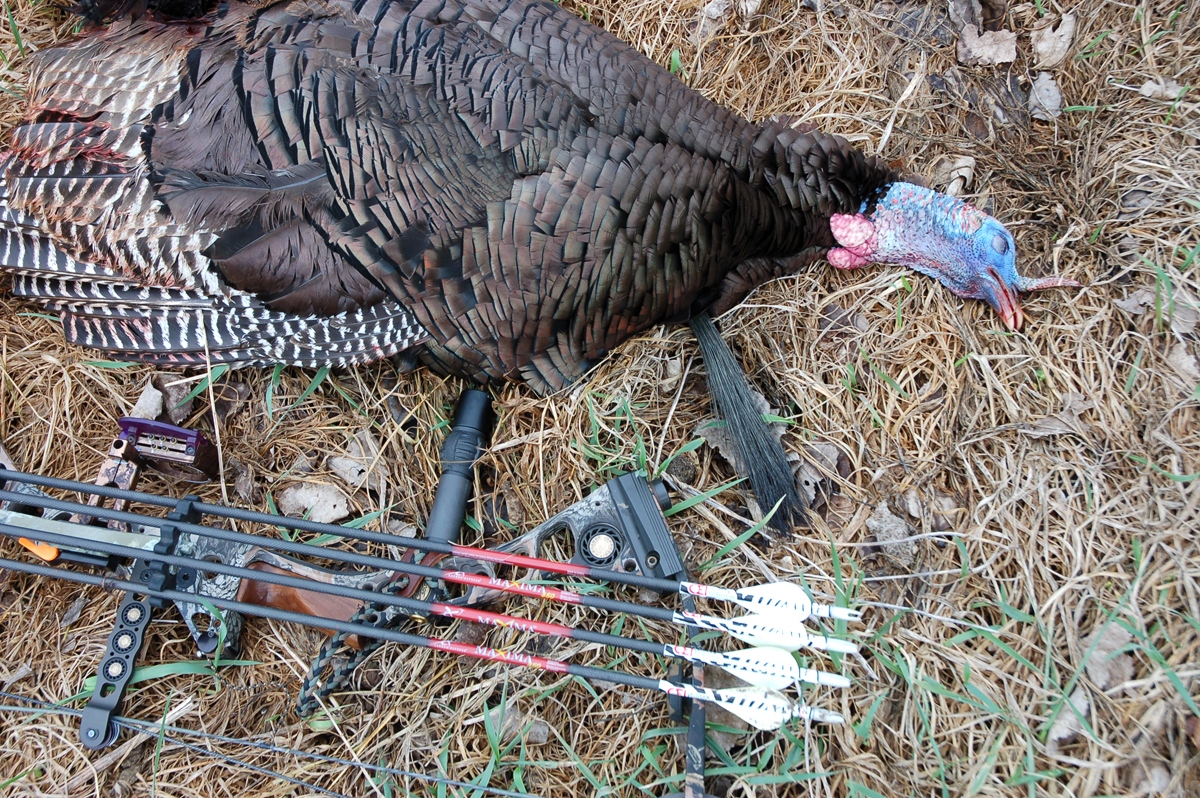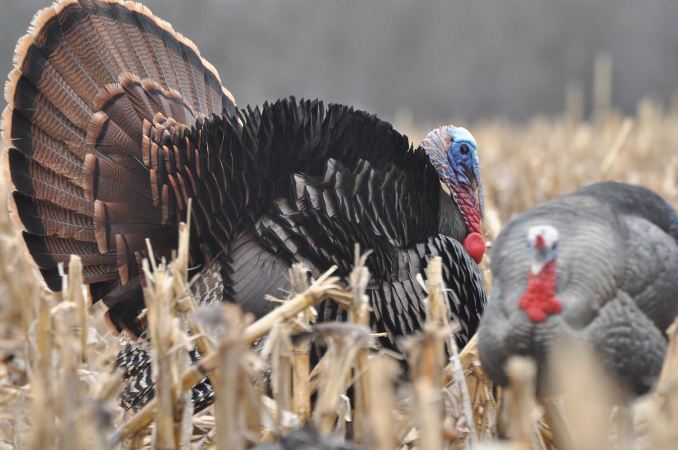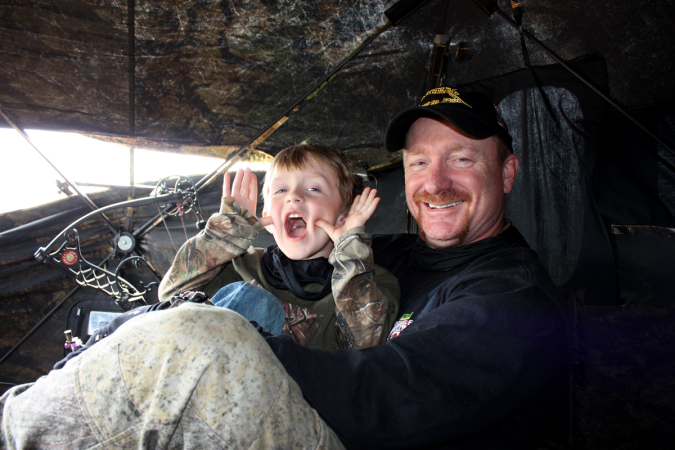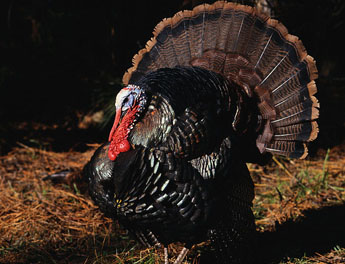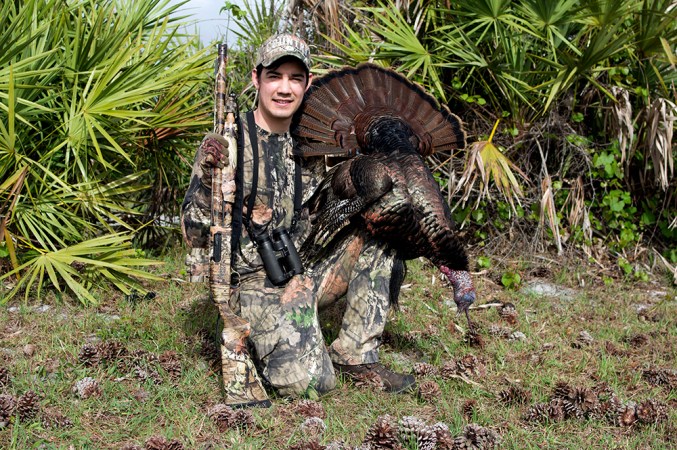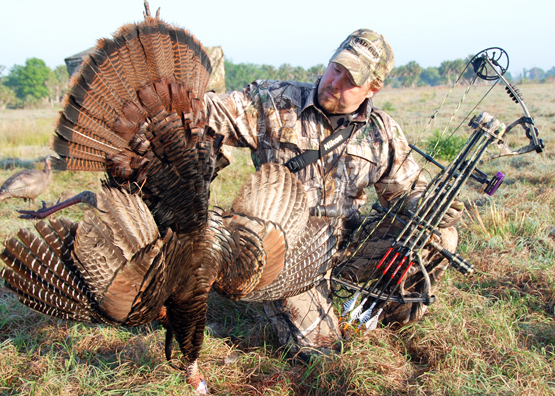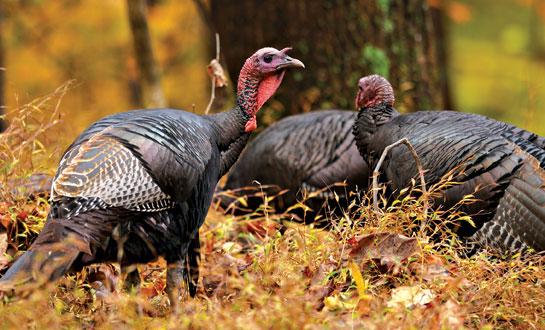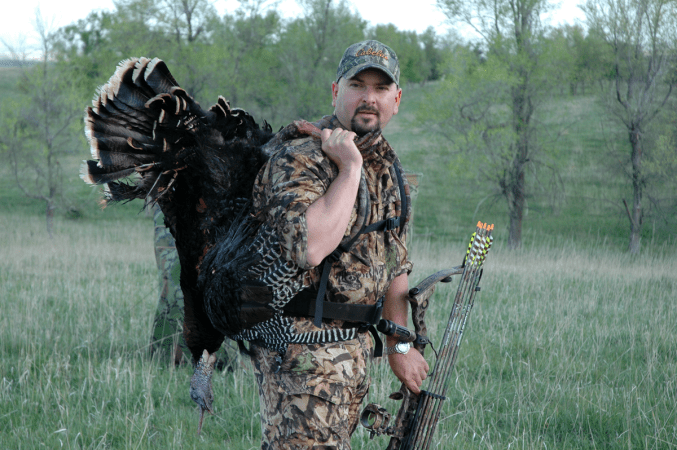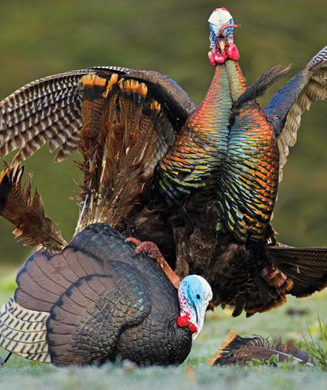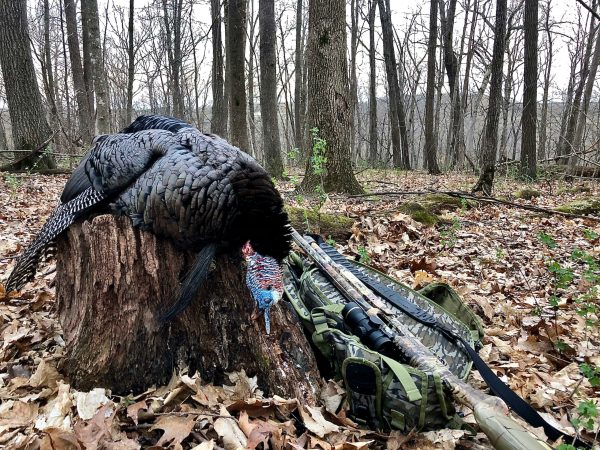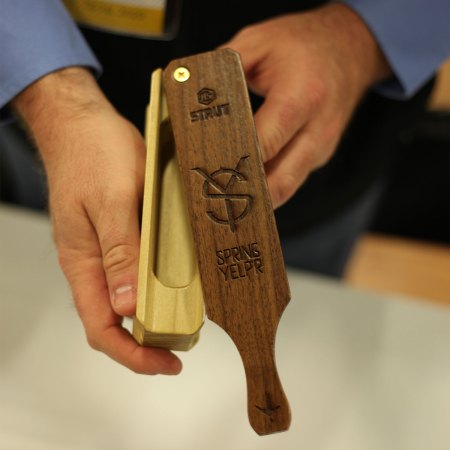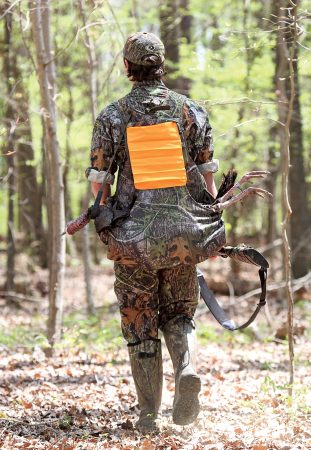A budding turkey bowhunter’s biggest challenge? Often, it’s finding birds to hunt. However, once you’ve scouted a public- or private-land tracts and have determined there are turkeys to be had, it’s your gear that will make or break your upcoming hunt. Here are some tips to help you arrive rigged and ready.
1. Bow
Look for a comfortable, easy-drawing model. Blazing-fast speed for turkeys is unnecessary; much more important is being able to draw your bow smoothly, in a jerk-free motion. To avoid a gobbler’s amazingly keen eyes, even in a blind, you’ll likely be required to draw early and hold longer while your bird moves into position. To help with this, drop your typical “big-game” bow weight by five or 10 pounds. Also, consider using a shorter axle-to-axle bow (32 inches or under for compounds, 56 inches and under for recurves) that will help you maneuver in ground blinds and in the woods.
2. Laser Rangefinder
A good idea for bowhunters to carry any time, but critical gear when hunting from a blind, from which distances can be much harder to judge. A turkey’s kill zone is relatively small; knowing the range means more longbeard success. When setting up along a pool-table-flat field edge, increase your odds by using yardage “markers”—sticks or small logs work great—to ensure accuracy when a big tom suddenly pops up or otherwise catches you by surprise. It happens.
3. Decoys
Together with ground blinds, today’s ultra-realistic decoys have revolutionized turkey bowhunting. If you haven’t already taken the plunge, get yourself a life-sized strutting tom or jake decoy, and one or two submissive/feeding hens. The most realistic decoys are expensive, but most are worth the investment; turkeys really seem to appreciate the upgrade. Place them no farther than 10 yards from your blind or in-woods ambush, and get ready.
4. Broadheads
The current trend in turkey heads are large, “head-lopping” models that can be deadly effective for those with steady nerves. However, if you’ve never bow-bagged a turkey before, I recommend you avoid these heads and tip your arrow with a large two- or three-blade mechanical head sporting a 2-inch or larger cutting diameter. Don’t aim for the tiny, bobbing head/neck, but rather, for a more “traditional” archery kill zone: the wing butt on a strutting, broadside gobbler. Traditional archers will be well-served with most larger, razor-sharp, 3-blade heads.
Ground-blind considerations come in many shapes and perspectives. Here are mine on blinds and ground-blind accessories:
5. Blinds
Not all of these portable wonders are created equal. First, make sure your choice is indeed portable; I like a full-size blind that packs down quickly, and silently, for those times when a strategic move, or several, can be a key to success. Also, lighter is better, and blind makers are starting to deliver. Consider a standard full-size blind about 25 pounds, and check out any new blinds that weigh-in seriously lighter. Also, dedicated blind hunters will want to pair them with a dedicated blind pack, especially smart designs that also consider accessories like a blind chair and decoys. One huge aspect to smart turkey hunting is being instantly mobile, and that kind of versatility starts with a truly ultralight gear arsenal.
6. Blind Chair
Bowhunting for turkeys is often a waiting game fueled by extreme patience, and nothing lets you tap into your inner Zen like a super-comfortable blind chair. I’ve tried many styles over the years and, because I tip the scales at 215 pounds, I’ve come to the conclusion that “ultralight” and “ultra-comfort” don’t often mesh. These days I’ll gladly spend a little extra on a feature-packed seat that offers extra adjustability and forces me to carry a little more weight, if it means that I can be comfortable and refreshed after a six-hour sit on uneven terrain.
7. Knee Pads
Strange but true; if the windows/openings of your blind allow for shooting from your knees, it can be wise to bring along a pair of knee pads to make the waiting game painless and silent. I make a habit of bringing the pads I typically use out West to stalk pronghorns on the prairie, and when the turkey hunting gets crazy—say, when multiple birds approach and/or you must quickly switch your shot from one side of the blind to the other—you will make less noise and commotion by maneuvering on your knees than attempting to reposition your chair. But you must make this decision early; stow your chair, bow stand, or calls well before a tom is in range so you have a nice clear, and silent, “pivot area” within your blind.
